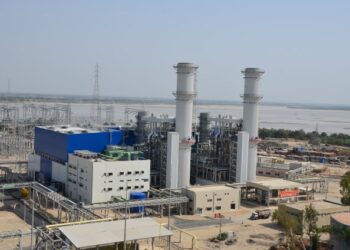ISLAMABAD: An engaging discussion took place among power sector experts regarding the causes of the high electricity tariff in Pakistan, a factor that has severely impacted the entire energy sector.
Dr. Fayyaz Chaudhary, Chairman of the National Grid Company (NGC), formerly NTDC, identified the major reasons for the soaring electricity tariff:
Inadequate power system planning: Dysfunctional planners and regulators have contributed to poor strategic decisions.
Inefficient load management: There is a huge disparity between summer and winter peak demands, with a difference of 17,000 to 18,000 MW. This led to the addition of 21,000 MW of new generation capacity between 2017 and 2024, primarily aimed at meeting summer peak demand. However, the overall utilization of this capacity has been low (around 23% over eight months), as seasonal variations were overlooked. Suboptimal choices regarding technology and location also worsened the issue.
Debt servicing burden: The cost of servicing debt for the new capacity has nearly tripled due to the depreciation of the Pakistani Rupee against the US Dollar, from PKR 100 to PKR 280 per dollar.
Irfan Ahmad suggested a forensic audit of all Independent Power Producers (IPPs) and related agencies, especially decision-makers, to uncover inefficiencies and incompetencies behind the high tariffs. He emphasized that since 100% of the funds are taxpayer money, an independent audit would be crucial for accountability and improvement.
Dr. Khalid Waleed recommended refinancing options for wind power plants through sector-coupling initiatives such as Green Hydrogen projects in the Dhabeji Economic Zone to conserve Net Primary Market Value (NPMV) during periods of curtailment.
Karachi businessman Rehan Jawed pointed to electricity theft as a major reason for higher tariffs. However, Dr. Fayyaz Chaudhary clarified that while theft contributes to circular debt, it is not the primary driver of tariff increases.
Analyst Wajid reaffirmed that currency devaluation has significantly increased the debt servicing costs of the added capacity. Meanwhile, Arif Bilwani noted that despite additional capacity being planned, very few obsolete generation companies (GENCOs) have been shut down.
Majid Hameed summarized that poor power system planning remains the central reason for high tariffs. Authorities focused heavily on meeting summer peak demand without accounting for seasonal fluctuations or implementing efficiency measures. This has led to underutilized plants and high fixed capacity payments, further exacerbated by currency devaluation. He stressed that research-based planning is vital for setting clear goals, minimizing risks, and ensuring the efficient use of resources.
Finance Committees approve removal of GST on solar panel import s
ISLAMABAD: The Finance Standing Committees of both the National Assembly and the Senate have approved the removal of the proposed...
Read more













